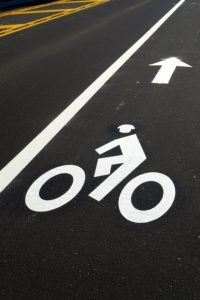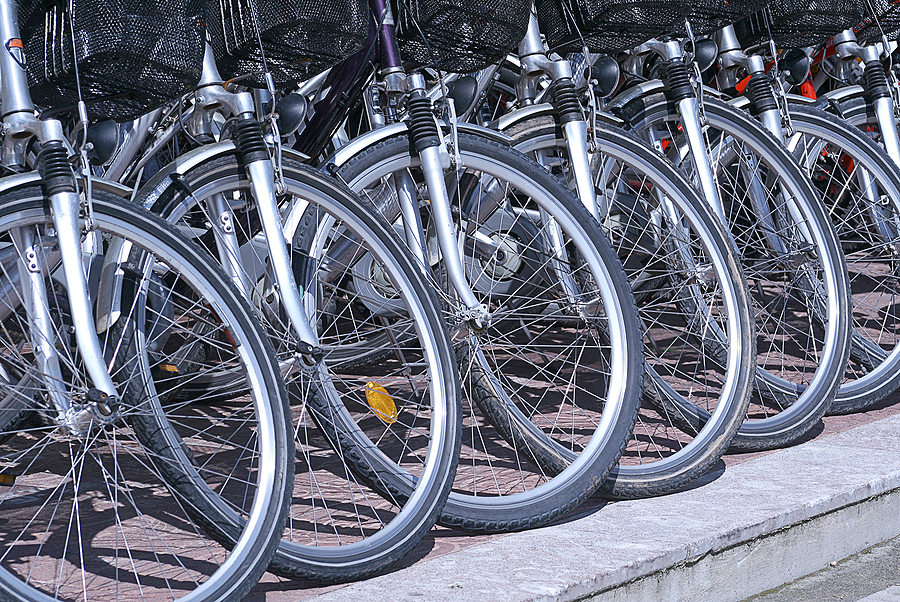In the capital of the U.S. auto industry, drivers have been slow to accept that more Americans are choosing bicycles over cars for commuting or for fun and exercise.
While other states adopted bike-friendly safety laws to accommodate cycling’s soaring popularity, Michigan steered clear of the trend and watched as more riders got killed by cars. Now lawmakers are trying to make up for lost time by seeking some of the nation’s strictest bike-safety regulations and tough new penalties for distracted motorists who cause serious injury or death while using a mobile device.
It could be a culture shock for a state where Fords, Chevys and Chryslers have reigned supreme for generations.
“It’s a really, really hot topic,” said Republican Rep. Triston Cole, chairman of the House Transportation and Infrastructure Committee. The bills have widespread support in the Senate and are awaiting further study in the House.
If the proposals become law, Michigan cyclists would gain additional legal protections and motorists would have to wait for 5 feet of clearance before passing a bike – a wider berth than all but one other state.
Cyclists say it is time for the state with the Motor City to change.
Many drivers “are just angry that we’re out there. They yell at us. They drive aggressively toward us,” said Paul Gobble, a photographer, designer and member of “The Chain Gang,” a club that organizes casual weekly rides on Tuesday nights.
Thirty-eight cyclists were killed on Michigan roads last year, almost double the number two years earlier. Nearly 2,000 were injured. Nationwide, 840 cyclists were killed in 2016, the most in 25 years.
Gobble, 48, was involved in one of the nation’s deadliest vehicle-bike crashes when a pickup truck driver allegedly under the influence of drugs hit a group of nine cyclists in June 2016 near Kalamazoo, killing five. Gobble, who suffered a brain injury and broken bones in his back, neck, leg and ribs, said there is a “great deal of ignorance” about cyclists’ rights to use the road.
The legislative debate is unfolding as bikes are booming all around the country. Nearly 900,000 Americans commute to work by bicycle – a tiny portion of overall traffic but a 39 percent increase from a decade ago.
But except for roughly half a dozen Michigan communities that have enacted local 5-foot ordinances, the state has largely hewed to its car-centric traditions.
That may be changing. Among large U.S. cities, bike commuting grew the most on a percentage basis in Detroit from 2000 to 2016, according to the League of American Bicyclists. A bike-share program was launched in the city this year.
Twenty-four of the 38 bicyclists killed last year in Michigan were riding straight ahead just prior to the crash, police reported. Cyclists see that as evidence that motorists are passing too closely.
Thirty states have enacted distance-specific “safe passing” laws, most requiring 3 feet of clearance for passing bikes. Nine more tell drivers to pass at an unspecified safe distance, according to the National Conference of State Legislatures.
In Michigan – where the law has been read to apply only to passing vehicles, not bikes – the proposal to allow a full 5 feet could force drivers to pull into the next lane rather than try to squeeze by. Cole suggested there are too many windy rural roads with miles of double yellow no-passing lines to require 5 feet. Citing concerns about commercial haulers, he said a universal distance requirement may not make sense for every situation.
“Give me a break,” scoffed retired computer industry executive Paul Selden, who serves as a road safety director for the Kalamazoo Bicycle Club. “Motorists have been crossing those lines for years” when they go around an obstruction or pass slower traffic such as farm vehicles, mail carriers or delivery trucks, he said.
Selden, 66, said he is used to vehicles crowding him toward the curb. Several years ago, a car clipped his left pedal as it went by, which sounded like “a gun going off.”
Also pressing for the 5-foot berth is Becky Callender of Lansing, whose 5-year-old son Henry was in a single file of bikes on a rural road in 2015 when he was struck by an SUV.
Henry, who was among 45,000 bicyclists injured in U.S. motor vehicle crashes that year, was hospitalized for nearly a month with brain and spinal cord injuries and is receiving physical and speech therapy. His helmet saved his life.
A 5-foot zone is “something that you can ticket. It’s something that you can teach and educate about in driver’s training. It’s something that’s concrete,” his mother said.
Jeremy Gray, a 51-year-old tech executive and a former psychology professor, was lucky to escape with a broken collarbone when a motorist hit him from behind on a country road outside Lansing in 2015.
“As a responsible driver, you just want to be at least that far away from somebody,” the avid cyclist said of the 5-foot proposal.
Other measures would expand an anti-texting ban and mandate that teen drivers receive at least one hour of instruction on laws pertaining to bicycles and other “vulnerable” roadway users.
Jayne Snider’s father, Eric, who rode nearly 6,000 miles a year, was struck from behind by a pickup truck and killed in 2016 while commuting to Lansing Community College, where he was an assistant dean. The driver was acquitted of operating a motor vehicle causing death. A legal expert blamed Michigan’s inadequate laws.
“Our current laws don’t protect our cyclists,” Snider told legislators at a recent hearing. “Do it for my 59-year-old father and just do it for those who no longer have a voice in our community.”
Was this article valuable?
Here are more articles you may enjoy.


 Roof Repair and Replacement Costs up Nearly 30% Since 2022, Report Shows
Roof Repair and Replacement Costs up Nearly 30% Since 2022, Report Shows  Plane Carrying New York Lawmakers Clipped at Reagan Airport
Plane Carrying New York Lawmakers Clipped at Reagan Airport  Insurance Industry Contemplates Knock-On Effect of Tariffs to Claims, Consumers
Insurance Industry Contemplates Knock-On Effect of Tariffs to Claims, Consumers  CBS Poised to Lose Bid to Stop Sony Taking ‘Jeopardy’ Rights
CBS Poised to Lose Bid to Stop Sony Taking ‘Jeopardy’ Rights 